Where is the destination of Iranian goods?
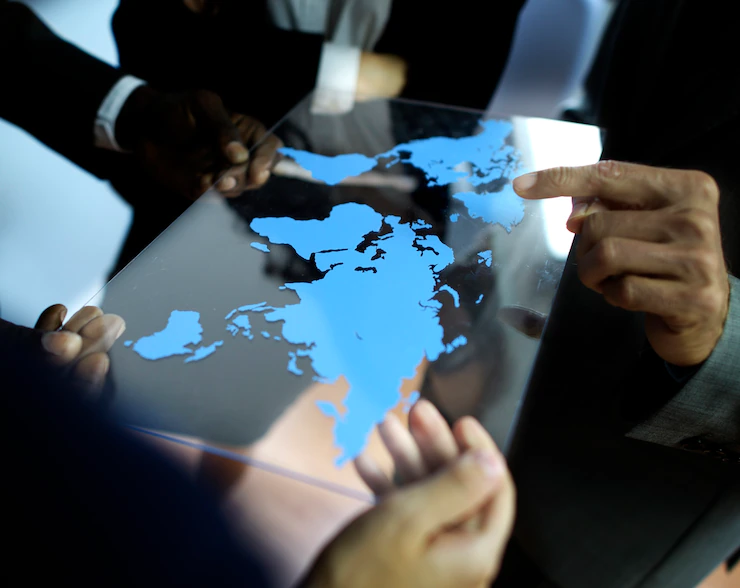
Important export goods of Iran and its destinations 1401
One of the very important goals of the current government, the 13th, is to increase trade, especially in non-oil woodworking, and according to the statements of the head of the Iran Trade Development Organization, in the vision that has been prepared, we should reach 75 billion dollars in exports by 1404. General statistics Iran’s non-oil trade (exports and imports) has grown by 22% in the first 4 months of 1401.
Considering the geographical situation and vast industrial and mineral power of our country, Iran is considered as one of the main suppliers of raw materials and equipment to the countries of the region, especially the neighboring countries. The production and industrial capacity of Iran in various fields has not yet been fully and effectively exploited. Without a doubt, with the support of the government and the efforts of the private sector, as well as familiarity and the application of international standards in production, packaging and foreign trade, we can Let’s use this potential power in the best way and create a suitable currency for the country. In this article, we intend to fully examine the important export goods of Iran and its destinations in 1401.
Stay with us until the end of this article for more information.
Export destinations

Turkey is a country located in the north of Western Asia, which is always known as the main crossing point between Europe and Asia. This country is one of the most important countries in the Middle East region with its location next to the Black Sea, Marmara, Mediterranean and Aegean Sea. Turkey has a humid and mountainous climate and often Its population consists of Turks and Kurds. The neighborhood of European and Asian countries together and access to open waters has placed this country in a very suitable position for connecting the two continents of Asia and Europe. The main part of Turkey’s economy belongs to the tourist and tourism industry. Also, due to its historical and cultural affinity with the people of Iran, this country is considered one of the main travel destinations for Iranians.
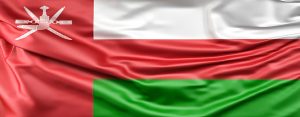 Oman is a small, Arabic-speaking country located in the southeast of Iran. The strategic geographical location of this country near the Strait of Hormuz has made it one of the active commercial areas in the Middle East. Oman has both sea and land borders. This country’s access to open waters and strong political and military relations with the United States have brought many benefits to it. Oman through the maritime borders of the Persian Gulf, the Arabian Sea and the Sea of Oman and through the land border of Yemen, Saudi Arabia and the UAE with Countries communicate. Although it has more limited oil reserves than most of the Persian Gulf countries, the main source of its annual income is from the export of crude oil to other countries. It is effective.
Oman is a small, Arabic-speaking country located in the southeast of Iran. The strategic geographical location of this country near the Strait of Hormuz has made it one of the active commercial areas in the Middle East. Oman has both sea and land borders. This country’s access to open waters and strong political and military relations with the United States have brought many benefits to it. Oman through the maritime borders of the Persian Gulf, the Arabian Sea and the Sea of Oman and through the land border of Yemen, Saudi Arabia and the UAE with Countries communicate. Although it has more limited oil reserves than most of the Persian Gulf countries, the main source of its annual income is from the export of crude oil to other countries. It is effective.
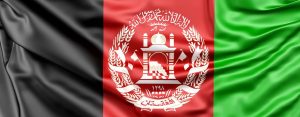 A part of ancient Iran is known today as Afghanistan. Afghanistan is a country in South Asia that has a land border with Iran, Uzbekistan, China, Pakistan and Tajikistan. The capital of Afghanistan is the city of Kabul, which is known as the administrative and political center of the country. More than four decades of war and numerous sanctions have placed this country among the most insecure regions in the world. Internal problems and issues caused by coups and successive wars have caused more than 2 million indigenous people to be displaced and many civilians killed. Political instability, government issues and Afghanistan’s dry climate are among the obstacles to development. This country is considered poor. According to official statistics; The per capita gross domestic product of Afghanistan in 2018 was only 2225 million dollars, which is the lowest domestic figure in the world.
A part of ancient Iran is known today as Afghanistan. Afghanistan is a country in South Asia that has a land border with Iran, Uzbekistan, China, Pakistan and Tajikistan. The capital of Afghanistan is the city of Kabul, which is known as the administrative and political center of the country. More than four decades of war and numerous sanctions have placed this country among the most insecure regions in the world. Internal problems and issues caused by coups and successive wars have caused more than 2 million indigenous people to be displaced and many civilians killed. Political instability, government issues and Afghanistan’s dry climate are among the obstacles to development. This country is considered poor. According to official statistics; The per capita gross domestic product of Afghanistan in 2018 was only 2225 million dollars, which is the lowest domestic figure in the world.
 Iraq is a religious country located in Southwest Asia, which has the most common border with Iran. In addition to the land border, this country also shares a border with Iran through the Persian Gulf. Having cultural and political commonalities between Iran and Iraq has provided a suitable platform for bilateral relations with this country. Geographically, the western part of Iraq is a desert and the eastern part has fertile plains. The country of Iraq has a long tradition and civilization in history, and this has caused many ethnic diversity to be observed in different parts of the country. The main part of Iraq’s income and economy is dependent on the export of oil and energy. According to statistics; This country is ranked fifth in the world in terms of having oil reserves.
Iraq is a religious country located in Southwest Asia, which has the most common border with Iran. In addition to the land border, this country also shares a border with Iran through the Persian Gulf. Having cultural and political commonalities between Iran and Iraq has provided a suitable platform for bilateral relations with this country. Geographically, the western part of Iraq is a desert and the eastern part has fertile plains. The country of Iraq has a long tradition and civilization in history, and this has caused many ethnic diversity to be observed in different parts of the country. The main part of Iraq’s income and economy is dependent on the export of oil and energy. According to statistics; This country is ranked fifth in the world in terms of having oil reserves.
 Turkmenistan is one of Iran’s western neighbors, which is connected with Iran through land and sea borders. This country is located in Central Asia and has a common border with the countries of Iran, Uzbekistan, Afghanistan and Kazakhstan. In 1991, after the collapse of the Soviet Union, Turkmenistan declared its independence. After that, by holding a national referendum, the one-party government was determined by popular votes. The capital of Turkmenistan is the beautiful city of Ashgabat, which is considered one of the most important tourist destinations in the Middle East. Geographically, this country is the main source of oil and gas reserves in the world. According to statistics; Compared to other countries with oil resources, Turkmenistan is in the 14th place. also; Salt mines, gold, uranium, agricultural industry and cotton production form a major part of its economy.
Turkmenistan is one of Iran’s western neighbors, which is connected with Iran through land and sea borders. This country is located in Central Asia and has a common border with the countries of Iran, Uzbekistan, Afghanistan and Kazakhstan. In 1991, after the collapse of the Soviet Union, Turkmenistan declared its independence. After that, by holding a national referendum, the one-party government was determined by popular votes. The capital of Turkmenistan is the beautiful city of Ashgabat, which is considered one of the most important tourist destinations in the Middle East. Geographically, this country is the main source of oil and gas reserves in the world. According to statistics; Compared to other countries with oil resources, Turkmenistan is in the 14th place. also; Salt mines, gold, uranium, agricultural industry and cotton production form a major part of its economy.
 Russia is the largest country in the world and one of the industrial poles of the Eurasian region. This country is located in North Asia and more than 80% of people live in its European part. The vast geography of this country has made it include many natural resources, including oil and gas. Also, due to its vastness, many parts of it are located in cold regions, and for this reason, no human activity or manpower can be seen in those areas. Until the 18th century; Russia was a weak country that did not have much size, but after the 18th century, when Peter the Great came to power, the situation changed in a special way. The opening of the country, fundamental reforms in the structure of the government, turned Russia into a powerful and vast country. At present, Russia is known as the eighth most powerful economy in the world, having a major part of mines, industries and extensive trade with the countries of the Eurasian region.
Russia is the largest country in the world and one of the industrial poles of the Eurasian region. This country is located in North Asia and more than 80% of people live in its European part. The vast geography of this country has made it include many natural resources, including oil and gas. Also, due to its vastness, many parts of it are located in cold regions, and for this reason, no human activity or manpower can be seen in those areas. Until the 18th century; Russia was a weak country that did not have much size, but after the 18th century, when Peter the Great came to power, the situation changed in a special way. The opening of the country, fundamental reforms in the structure of the government, turned Russia into a powerful and vast country. At present, Russia is known as the eighth most powerful economy in the world, having a major part of mines, industries and extensive trade with the countries of the Eurasian region.
 Kyrgyzstan is a small country located in Central Asia, which is in the neighborhood of countries such as; China, Tajikistan, Uzbekistan and Kazakhstan are located. This country has vast mountainous areas and is also known as the smallest landlocked country in Asia. In the continuation of this article, we are going to examine the challenges of exporting to Kyrgyzstan. From the past until now; Relations between Iran and Kyrgyzstan have gone through a very favorable process. After the victory of the Islamic revolution, serious relations were formed between the two countries, which are still standing. The government of Kyrgyzstan is governed by a parliamentary system, and the main annual income of this country is through the export of agricultural products. The geographical and mountainous conditions of this country have made it one of the main gold and uranium mines.
Kyrgyzstan is a small country located in Central Asia, which is in the neighborhood of countries such as; China, Tajikistan, Uzbekistan and Kazakhstan are located. This country has vast mountainous areas and is also known as the smallest landlocked country in Asia. In the continuation of this article, we are going to examine the challenges of exporting to Kyrgyzstan. From the past until now; Relations between Iran and Kyrgyzstan have gone through a very favorable process. After the victory of the Islamic revolution, serious relations were formed between the two countries, which are still standing. The government of Kyrgyzstan is governed by a parliamentary system, and the main annual income of this country is through the export of agricultural products. The geographical and mountainous conditions of this country have made it one of the main gold and uranium mines.

Moldova is a small landlocked country in Eastern Europe. This country, which is also known as the Republic of Moldova, shares a common border with two countries, Ukraine and Romania. The geographical and climatic conditions of Moldova have provided a suitable platform for the prosperity of the agricultural industry. After declaring independence in 1991, Moldova separated from the Soviet Union and began the process of privatization and improvement of the economic system. At the moment; As an independent republic, Moldova is applying for membership in the European Union.
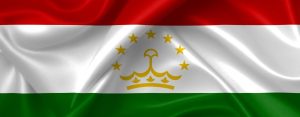
Tajikistan is a sparsely populated country located in the Central Asian region, which is very similar to Iran in terms of cultural and social characteristics. This landlocked country is known as the smallest country in Central Asia. Tajikistan is considered one of the important economic centers of Asia due to its climate and weather conditions. Farms and vast natural areas have made this mountainous country become the most important center for cotton cultivation, grape orchards, fruits, etc. Even now, about a third of the population of Tajikistan is engaged in agriculture and horticulture. Tajikistan has huge resources of gold, copper, uranium and silver mines. It also includes industries such as hydro-electric power plants and numerous factories.
 Belarus is a country in Eastern Europe, which neighbors countries such as; It is located in Russia, Latvia, Ukraine, Lithuania and Poland. The turbulent history and political and economic fluctuations of this country have caused it to experience a new chapter in its business relations with its neighbors. After declaring independence in 1991, Belarus was separated from Russia and the Soviet Union as an autonomous region. Geographically and culturally, this country is very close to Russia, and for this reason, it has maintained its relations with this country until now.
Belarus is a country in Eastern Europe, which neighbors countries such as; It is located in Russia, Latvia, Ukraine, Lithuania and Poland. The turbulent history and political and economic fluctuations of this country have caused it to experience a new chapter in its business relations with its neighbors. After declaring independence in 1991, Belarus was separated from Russia and the Soviet Union as an autonomous region. Geographically and culturally, this country is very close to Russia, and for this reason, it has maintained its relations with this country until now.
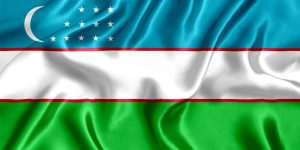
Uzbekistan is a country located in Central Asia and is landlocked. This populous country shares borders with countries such as Kyrgyzstan, Turkmenistan, Kazakhstan, and Tajikistan. It also has relatively favorable trade and political relations with its neighbors. Uzbekistan, due to its location in Asia and The cultural region has many political and social commonalities with Iran. Although the markets of Uzbekistan have always been a suitable space for selling and investing in Iranian goods, despite the high potential and capacity of trade relations between these two countries, Iran’s share of trade exchanges with Uzbekistan is very high. It is considered insignificant and less than one percent. Uzbekistan is very rich in mineral and natural resources. Gold mines, copper reserves, uranium reserves, natural gas reserves, etc. constitute a major part of the economy of this country. also; This country has vast cotton plantations, which makes it the fifth largest exporter of cotton in the world. Many products, including agricultural products and many non-oil items, are exported from Uzbekistan to other countries.
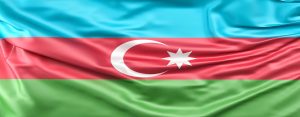
The country of Azerbaijan is located in North West Asia and is one of Iran’s neighbors. The existence of common land borders with Iran has made this country always considered one of the destinations of Iranian goods and items. In the last two decades; Azerbaijan increased its exchanges with countries of the world, including Iran, by setting laws to remove trade barriers. In 2008, a new chapter of Iran-Azerbaijan trade relations was formed. Changes in Azerbaijan’s banking laws, commercial contracts, cancellation of visas by Iran, removal of import barriers, etc., were part of the countries’ measures to expand trade and economic relations.
In the 9 months ending in December this year, the highest growth in exports has taken place in the Eurasian Economic Forum. 75% growth in value and 117% weight growth in exporting goods to these countries is the result of exporters’ performance in 9 months this year. But on the other hand, the largest drop in exports is reflected in the statistics of exports to the Persian Gulf Cooperation Council, which shows a 56% drop in value and a 35% drop in weight.
Exports to member countries of the Islamic Cooperation (OIC) also grew by 2% in terms of value and 5% in terms of weight. Exports to the Economic Cooperation Organization (ECO) have faced a 5% drop in value and a 27% increase in weight. The sale of goods to the Commonwealth of Independent States (CIS) has also grown by 8% in terms of value and 48% in terms of weight. The export of goods from member countries of Southeast Asian Cooperation (ASEAN) has experienced an 8% drop in value and a 4% increase in weight in the 9 months ending in December this year. The European Union has also decreased by 39% in terms of value and 36% in terms of weight in buying goods from Iran compared to the same period last year.
Petroleum, chemicals and their derivatives
Gas condensate was the biggest export of Iran in the first quarter of 2017. Iran’s most popular export accounts for 17% of the market share. After gasoline, light gasoline oils and related products are the second most important export of Iran. Polyethylene film accounted for 3.6% of Iran’s exports in 2016 and ranked third. Liquid propane or LPG is one of the most important exports of Iran, which ranks fourth with 3.32% of exports. Methanol was Iran’s fifth largest export in 2017 with 17.3%. Iran also exports pottery, strontium, iron ore and red clay. Exporting decorative bricks is also profitable; In 2016, Iran exported construction equipment to Iraq, Turkey, Afghanistan, UAE and China. Iran also exports almonds and raisins, grapes and watermelons, dates, figs, saffron, pistachios, fish and shrimp. Handcrafted items including: handwoven woolen carpets and copper products are also exported. Iran is the largest exporter of handwoven carpets in the region, which exports carpets to America, Germany, Italy, UAE, Lebanon, Switzerland, France, Japan and England. Our country has received 273 UNESCO marks for traditional textiles, carpets, felt hats, traditional clothes and dolce embroidery and has more than half of the world’s handicrafts. Careful planning may strengthen Iran’s handicraft exports.
- Gaining knowledge about international trade and getting to know the export and import process
- The nature of managing the export of goods and services
- The nature of export management can be properly understood in the context of the functional field of export and the management process involved in export management.
- Exports are classified into the following categories:
1- Export of goods
2- Export services
3- Project export
4- Telephone exportHere we explain two types of export of goods and services:
• Export of goods
Export of goods refers to the export of physical goods. For example, clothing, engineering goods, furniture, artwork, etc.• Export services
Export of services refers to the export of goods that do not exist physically. It means professional, technical or public services. Examples of this export include the export of computer software, architecture, entertainment, or technical consulting services, etc.

